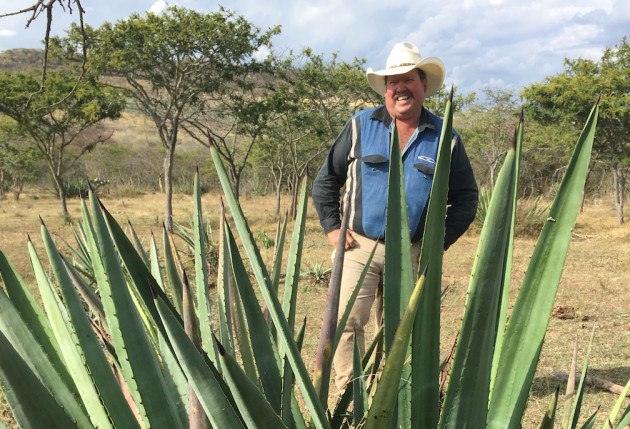
Raicilla: The new face of agave
From an almost complete unknown beyond the Americas, raicilla is now making inroads overseas, including markets such as the UK. David Furer reports on the new kid on the spirits block.
For the uninitiated, Raicilla is essentially a Jalisciense mezcal, distilled from agave like tequila and mezcal, that has been produced for over 500 years. And it’s on the rise. The spirit was granted a Denominación de Origen (DdO) in January 2019, although the application of that has already proved controversial due to geographical and production parameters, with some producers preferring to drop the name rather than use it on the label. Raicilleros previously would make and sell without government regulation as allowable DdO production in Jalisco was only applicable to tequila, but producers with an eye on making inroads in overseas markets have embraced the regulations.
Across the Atlantic, some of the best have found their way to London, imported by go-ahead spirits suppliers such as Master of Malt, and finding their way onto lists such as Chris Tanner’s, who oversees Soho’s The Vault and The Proofing Room in Spitalfields. Tanner says he curates a list of “raicilla as good as it can be”, stocking Venenosa, Estancia, and Mexicat.
“The price can be a pitfall, but a lot craft cocktail bars have guests ready for a new experience, a small comped pour can go a long way, and with raicilla very much in its infancy it’s up to us to communicate to consumers that agave is more than tequila and mezcal,” adds Tanner.
“Mexicat is one of the most approachable examples to serve novices as it’s not overwhelmingly earthy or grassy, while Venenosa packs a punch of flavor and ABV, and Estancia is elegant and floral,” Tanner says of his range.
These are among the labels that are beginning to turn heads, gradually emerging behind the wave that has swept tequila and mezcal along.
The story behind Mexicat is an interesting one. Jorge Alvarez arrived in Los Angeles at age 19 from his Guadalajara home to study, then backpacked around Europe. “I knew tequilas then were poorly packaged and marketed,” he says.
After returning home he interned at the Consejo Regulador del Tequila and worked at a cooperative distillery, where he first tasted raicilla, and then visited many producers to find one whose work could have broader appeal.
“Half of production is now with a double distillation though people in the denominated 14 villages still single distill because it reflects the traditional preferences for higher alcohol and bigger flavors,” says Alvarez.
He partnered with London’s Chris Peel and Ana Gomez to launch the Mexicat line of agave spirits in September 2016.
Rio Chenery’s Estancia label, meanwhile, started in 2013, “after a particularly cold New York City winter when I decided to move to my mother’s home in Puerto Vallarta to make our family's favorite agave spirit, to work with my hands in the countryside rather than at a computer in Manhattan.”
To supply accelerating growth, Australian-Mexican Chenery has purchased a 115ha swathe of land where wild agaves are harvested. Planting of Maximiliana (see inset) has commenced, and he is planning a solar-powered distillery, complete with a few visitor cabanas. Due to Mexico’s high alcohol taxes and low average incomes Estancia’s 90% proof version is exclusively for export while the standard 80% proof is reserved for Mexico.
Esteban Morales Garibi launched his La Venenosa Fairtrade-certified Sierra Occidental and Sierra Tigre as single distilled raicillas, along with the Maximiliana-distilled Puntas as a 63% abv overproof, which is double-distilled. There’s also Tabernas in the range, which is an affordable line of 4000 bottles, sourced from varying distillers that satisfy Morales’s personal tastes with a quality product that changes when the batch is sold out.
Other notable producers are beginning to be noticed beyond Mexico too.
The 1,700m altitude village of Los Jecales is home to Lobo de la Sierra’s Geraldo Peña. Peña first commercialized raicilla in 2003 from what had long been a family tradition. In addition to a recently established cultivation site, he also harvests wild-crafted agave of eight to 18 years age, for a wood-fired, six hour distillation, first coming off at 40%, then subjected to a gas distillation with the second run coming off at 75%, and a third down to 35% with all blended to a final 40% with the addition of water sourced from his well.
Then there’s Saité raicilla, produced by Edgar Saul Covarrubias Fletes (pictured) and business partner Carlos Flores, who use Inaequidens and Rhodacanta varieties harvested from Covarrubias’s 500ha Rancho Los Tepetates.
Commercialized in 2015, with 600 litre lots produced sporadically throughout the year, Flores admits that, "sales can be a little difficult here because people prefer tequila”, but adds, “we've made many appointments with wine sellers to promote it.”
And it’s perhaps that last comment, pointing to the specialist and niche positioning of raicilla, that reveals is best way forward in a world awash with big-hitting rivals tequila and mezcal.
What is Raicilla?
Raicilla is a Mexican spirit distilled, as with tequila and mezcal, from the genus agave, with common species used to produce it – Angustifolia, Maximiliana, Inaequidens, Valenciana, Rhodacantha and Silvestri, in the main.
Most production occurs from December to May, with the general production areas and styles being:
• La Costa – northern and more sub-tropical rising from the sea upland with fruity and smoky characteristics
• Sierra – possessing the greatest number of distillers, often offering more herbaceous and complex characteristics
• Southern – retains a longer tradition, possesses the largest diversity of agave varieties and technical styles




